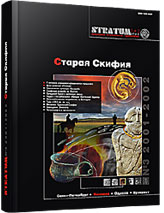Фрако-гетские древности в южной лесостепи Среднего Днестра (культурно-хронологическая систематизация материалов из раскопок второй половины ХХ века)
Thracian-Getian antiquities in the southern forest-steppe of the Middle Dniester (the cultural-chronological systematization of the materials from excavations in the second half XX century)
Author(s): Maia T. Kaşuba, Vasile Haheu, Oleg LeviţkiSubject(s): History, Archaeology, Cultural history, Ancient World
Published by: Издательский дом Stratum, Университет «Высшая антропологическая школа»
Summary/Abstract: The topicality of publishing the old archaeological collections of the period of the middle of I mil. BC is not only designed for the replenishment of the sources, but also, what is more important, for working out in detail the cultural and historical situation. Moreover, it is topical, since such important issues like the cultural genesis, the chronology and the division into periods have not been finalized or solved for the history of the Thraco-Getians and the historical fate of the bearers of this culture is not completely clear despite the fact that about five hundred Thracian-Getian sites are known by now and the appropriate bibliography is very abundant. It was not occasional, that the authors chose the territory of the Carpathian-Dniester area. For many years the Carpathian-Dniester area served as a contact zone, which was characterized by a particular dynamic development of its ethnic, cultural and social processes. It was the Middle Dniester area, which served during the first half of I mil. BC as a kind of cultural and genetic center, whose impulses were imperative for the cultural development of the forest-steppe regions of the Dnieper-Dniester-Prut interfluves.The research history of the Thracian-Getian sites of this area begins from the middle 40-s of XX century. There are three main research stages, whose turns are marked by important developments.81 Thracian-Getian sites are known in this area. Excavations were carried out in eight of them during various periods, but the materials were published in a very summarized form and did not become subject of specific studies. From the cultural-chronological viewpoint, the sites differ in their composition. Many layers represent all the sites. Bearing in mind the period, we are interested in, namely, the second half of the VII to the III centuries BC. From the viewpoint of the material culture (first of all the ceramic artifacts), all the historical periods (the final stage of the Basarabi-Sholdanesti culture, the early Getian and the Getian cultures) are represented by a number of various horizons.Proceeding from the above, one can conclude that it was this zone of the Middle Dniester area that played a particular role in the cultural transformations from this area during the Late Hallstatt time (the middle of the VII-VI centuries BC), it explains why the new, namely, Early Getian culture emerged from this period.Further on, the V century BC is represented by the appropriate horizon on the majority of the sites within this micro-zone. And finally, the classic period of the Getian culture is widely represented both for the micro-zone of the Middle Dniester area and for the entire Getian world.
Journal: Stratum plus. Археология и культурная антропология
- Issue Year: 2002
- Issue No: 3
- Page Range: 118-223
- Page Count: 106
- Language: Russian
- Content File-PDF

